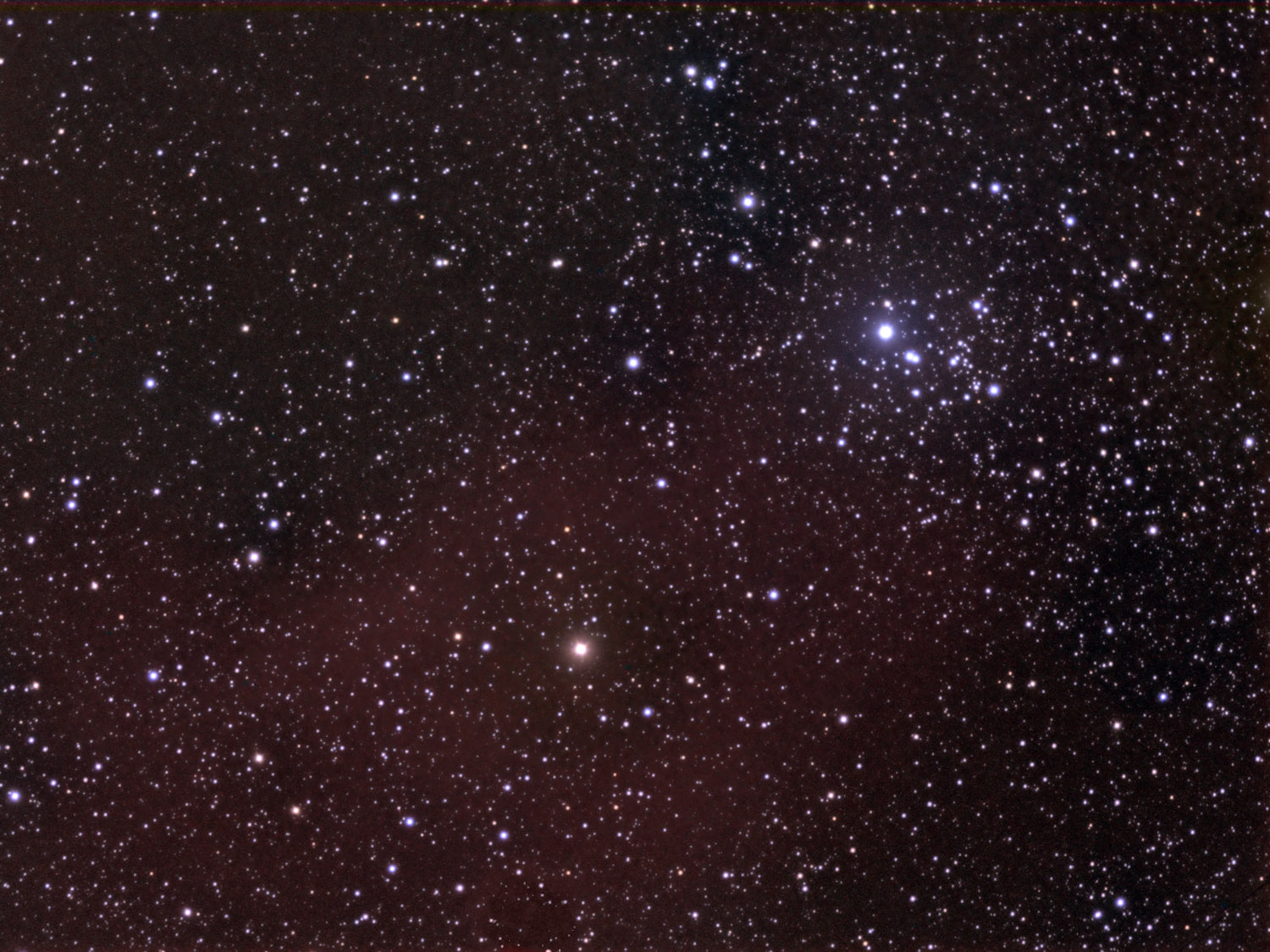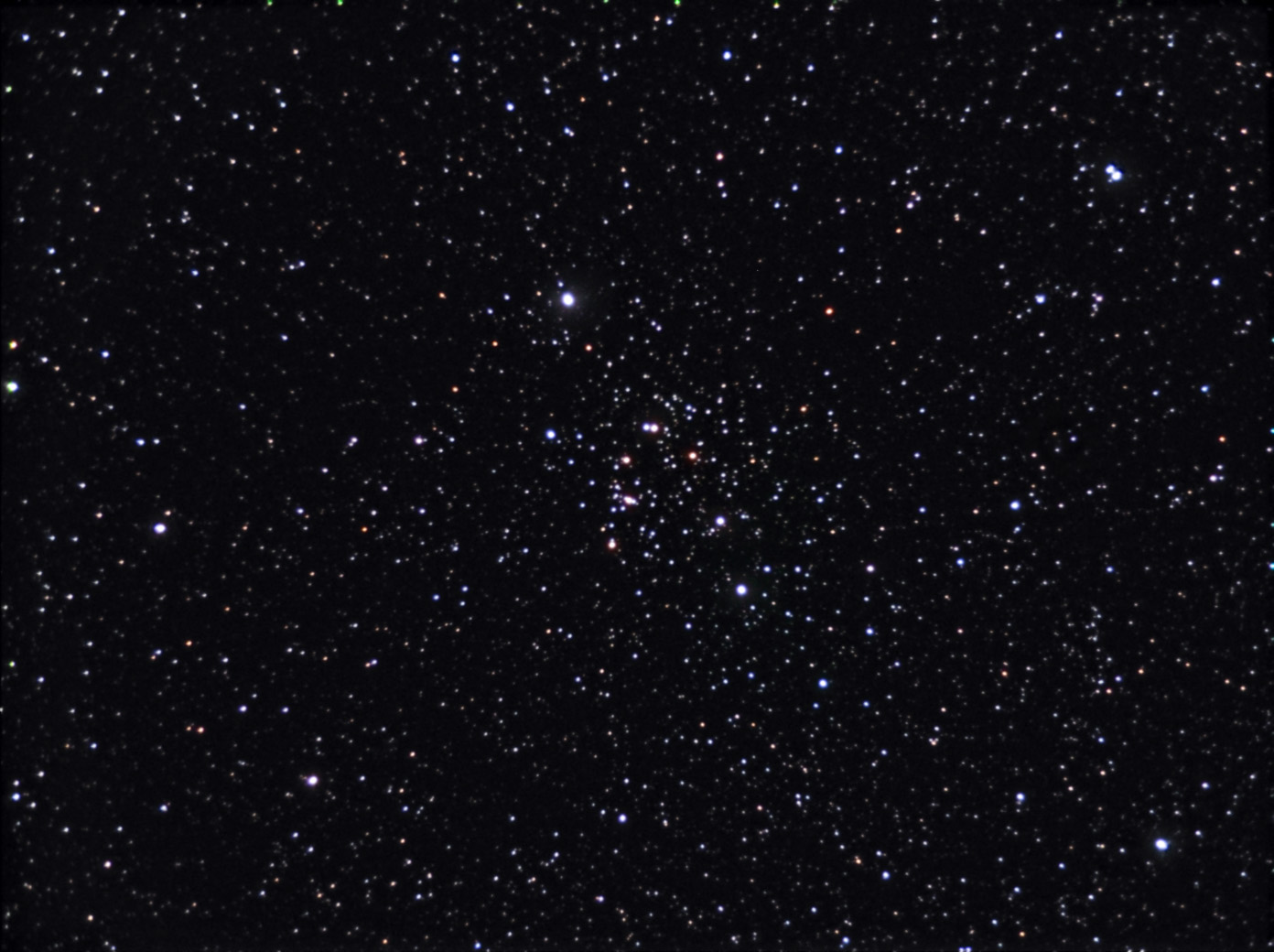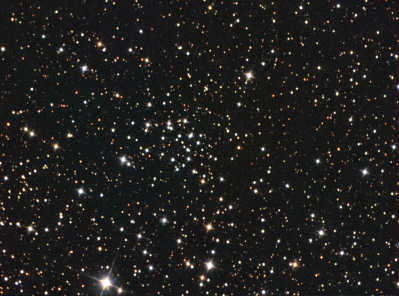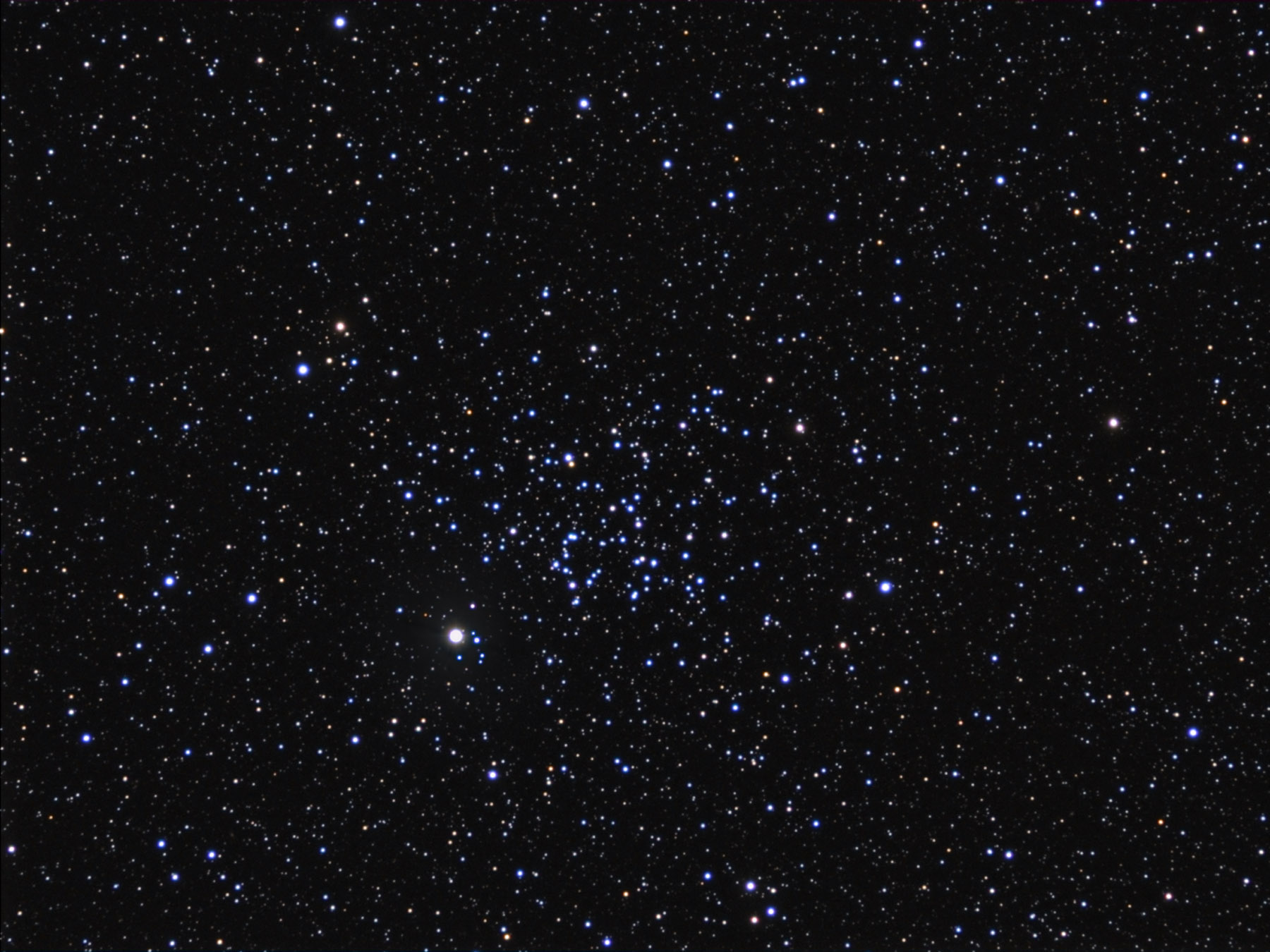STARLOG
UNICORN SPRINKLES
JANUARY 22, 2018
| Observer: |
Tom Campbell |
| Location: |
College Station, Texas (Long: 96°17'W Lat: 30°37'N) |
| Telescope: |
Zhumell 12" f/5 Dobsonian |
| Eyepieces: |
Zhumell 30mm (51X)
Explore Scientific 18mm (84x)
Explore Scientific 11mm (138x) |
| Lenses: |
Celestron Luminos Barlow (2.5x) |
| Weather: |
The sky was mostly clear. Temperature was in the mid 40s (F). The transparency was above average and seeing was average. |
Clear skies have been a rarity lately, so despite the crescent Moon overhead for most of the evening, I wanted to take advantage of the opportunity. I'm glad I did. Transparency was good and seeing was above average for my back yard.
I set up my gear and went back inside to eat supper and come up with an observing plan. Looking through my logs, I noticed I still had several open clusters to nab in the vicinity of Monoceros, the Unicorn.
Heading back outside, my heart sank as I noticed the neighbor behind me had left his security lights turned on. They shine over the privacy fence and right into my back yard. To make matters worse, Monoceros was hanging out right over his rooftop. Open clusters are a lot more forgiving of sky conditions than other types of celestial objects, so I hoped it wouldn't ruin my evening.
Before I got started on my main list of targets, though, I wanted to take another look at NGC 2158. I was in its general vicinity during my last observing session, but had forgotten to take a look at it. I've only seen it in my 8" Dobsonian, where it was a tiny smudge, even under fairly dark skies. I was curious about how well it would show up in suburban skies in the 12".
| NGC 2158 |
Gemini |
Open Cluster |
8:30pm CST |
 |
This cluster is very near M35. I had to use a barlowed 11mm (345X) to see it clearly. The cluster is near to a much brighter star, but the cluster itself is faint, requiring averted vision to see individual stars. About 12-15 stars were seen in all, and the overall shape was not quite round. I think I'd have better luck with this one with a darker sky. |
| |
| W CMa |
Canis Major |
Carbon Star |
8:45pm CST |
This is a nice carbon star and makes for a good starting place for my starhopping tonight. I have difficulty seeing the head of Canis Major with my naked eye, so this is something that easily stands out in the eyepiece. The star is a bright orange color and is surrounded by a few white stars of similar magnitude. |
| |
| NGC 2343 |
Monoceros |
Open Cluster |
8:50pm CST |
 |
This is a small cluster. With the 18mm eyepiece (84X), it only takes up about 1/5 of the field. I could detect 12-15 stars altogether. The brightest 3 members form a V shape. Switching to my 11mm eyepiece (138X) didn't reveal any more stars, but one of the stars of the V is actually a pair of stars. The brighter star was yellow and the fainter one was orange. |
| |
| NGC 2335 |
Monoceros |
Open Cluster |
9:00pm CST |
 |
This cluster is a bit smaller than the previous one and not as obvious. The brightest stars form a diamond shape. The other members are quite a bit fainter. The overall shape is oval, A dozen or so stars were visible. |
| |
| NGC 2353 (Avery's Island) |
Monoceros |
Open Cluster |
9:10pm CST |
 |
This cluster is right next to the star HIP 34982 and easy to find. I could detect about 15 stars altogether. Overall, the shape reminds me of a lunar lander or a jellyfish. The scope was pointed towards the neighbor's security lights and the contrast was terrible. |
| |
Some time back, I made an extension tube for my dob made out of black construction paper. It fits over the end of the telescope tube and helps to block stray light from reaching the bottom of the focuser. I ran back to the garage to get it, in the hopes it would help with my neighbor's lights.
As I was in the middle of struggling to fit it over the tube while wearing gloves, the neighbor turned off his security lights. Wow, that was better! I put the extension on my observing table in case I needed it later, and proceeded with my list of targets.
| NGC 2345 |
Canis Major |
Open Cluster |
9:20pm CST |
 |
At 138X, the cluster is elongated and the brigher stars are somewhat dispersed. There are 9-10 of the brighter members, with many fainter ones near the center, resolving only with averted vision. With a little more resolution, I think this would be a very nice cluster. |
| |
I heard a loud screech overhead. I looked up to see the form of a screech owl being lit up by the College Station light glow. This owl has lived in our neighborhood since before I moved here a couple of years ago. I like to think of him as our neighborhood watch owl. I waved to him (although he was already past me) and continued my observations.
| M 50 |
Monoceros |
Open Cluster |
9:25pm CST |
 |
With my 11mm (138X), this cluster almost fills the field. A gorgeous cluster! Near the middle of the cluster is a triangle of stars. The overall shape is also somewhat triangular. Off on one side is a bright yellow star, perhaps the brightest member of the cluster. |
| |
| NGC 2311 |
Monoceros |
Open Cluster |
9:35pm CST |
 |
This is a faint cluster within the background of the Milky Way. The best view was with my 11mm (138X). The stars are faint and form an oblong shape similar to a dipper. There are about a dozen stars visible altogether, somewhat compact. The foreground stars are actually brighter and more impressive. |
| |
| NGC 2506 |
Monoceros |
Open Cluster |
9:50pm CST |
 |
This cluster is just a little ways from Alpha Monoceros. It's not very impressive, consisting of faint stars. Its overall shape is a pentagon, with little knots of stars throughout. |
| |
| NGC 2539 (Dish Cluster) |
Monoceros |
Open Cluster |
9:55pm CST |
 |
Using the 11mm (138X), the cluster takes up about 2/3 of the field. It's located right next to 19 Puppis. It has about 3 dozen stars, most of which are somewhat faint. It also appears to have several unresolved stars. The overall shape of the cluster is elongated and curved, something like a crescent. Very nice! |
| |
The owl screeched again. He was a bit closer to me this time, but still high above the trees and rooftops. I made a few whistling sounds to try to thank him for his hard work tonight, but I'm sure he thought I just sounded like a crazy human and paid me no mind.
I had finished out my main target list, so I spent some time just enjoying the night. With the neighbor's security lights out, the back yard was reasonably dark. There was also no wind, so even though it was cold outside, it wasn't brutal. I scanned the sky naked eye for a bit, enjoying the rare transparency. I randomly moved my telescope along the Milky Way that passed through Orion, Canis Major and Monoceros, stopping briefly to take a closer look at the Orion Nebula and the Winter Albireo.
Although the Milky Way itself wasn't visible with my naked eye, it looked fantastic through the telescope, with thousands of stars reaching out of the darkness. The night was absolutely still and quiet. You could Reluctantly, I knew that tomorrow was a work day and I had to put away my gear.








